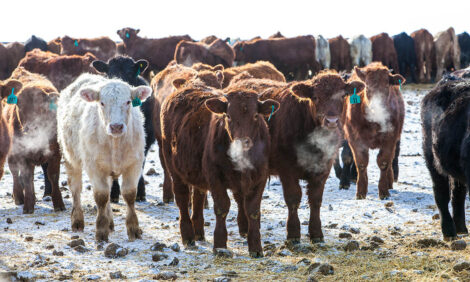



Some Progress on Climate Change Impacts Made by UK Agriculture
UK - A new report from Defra reveals improvements made in greenhouse gas (GHG) emissions in terms of soil nitrogen balance and artificial fertiliser use over the last decade, while a reduction in broiler feed conversion has been achieved in the last two years.Existing statistics on agriculture are brought together in the fifth edition of the report, 'Agricultural Statistics and Climate Change' published by the Department for the Environment, Food and Rural Affairs (Defra).
The report aims to help inform the understanding of the link between agricultural practices and greenhouse gas (GHG) emissions, summarising available statistics that relate directly and indirectly to emissions and links to statistics on farmer attitudes to climate change mitigation and uptake of mitigation measures. It also incorporates information on developing research and provides some international comparisons.
The indicator framework aims to assess progress in reducing greenhouse gas (GHG) emissions whilst research is undertaken to improve the UK agricultural GHG inventory (completion expected in 2015).
The framework, initially developed as part of the 2012 review of progress in reducing GHG emissions from English agriculture, consists of 10 key indicators covering farmer attitudes and knowledge, the uptake of mitigation methods and the GHG emission intensity of production in key agricultural sectors. As far as possible, it reflects the farm practices which are aligned to the Industry’s Greenhouse Gas Action Plan and acknowledges the indicators set out in the Committee on Climate Change annual progress reports.
The current status of each of the 10 individual indicators listed below was examined.
- Overarching indicators
- Farmers' attitude and knowledge
- Uptake of mitigation methods
- Soil nitrogen balance
- Sector-specific indicators
- Pig sector: feed conversion ratio for the fattening herd
- Grazing livestock sector: beef and sheep breeding regimes
- Dairy sector: Ratio of dairy cow feed production to milk production
- Poultry sector: feed conversion for table birds
- Cereals and crops: manufactured fertiliser application
- Slurry and manure
- Organic fertiliser application
For some indicators (such as farmer attitudes), there are limited data currently available to assess long or short term change.
Where longer term data are available, a current assessment shows the overall picture to be mixed.
Over the last 10 years, there is a positive long-term trend for the soil nitrogen balance (a high level indicator of environmental pressure) and for the derived manufactured nitrogen use efficiency for barley, oilseed rape and sugar beet.
However, for intermediate outcomes relating to GHG emission intensity for the livestock sector, there has been either little overall change in the longer term trend (e.g. feed conversion ratios for poultry) or some deterioration (e.g. feed conversion ratios for the pig fattening herd).
When assessed over the most recent two years, the indicators suggest either little change or positive trends in the case of intermediate outcomes relating to poultry, pigs, oilseed rape and sugar beet.
Indicators focusing on the uptake of particular mitigation methods, including those relating to organic fertiliser management, application and use within anaerobic digestion provide a measure of progress towards achieving the industry’s ambition to reduce agricultural production emissions by 3Mt CO2-equivalent by 2020 compared to a 2007 baseline.
Together these indicators suggest that, by early 2014, a 1.15Mt CO2-equivalent reduction in GHGs had been achieved, around 33 per cent of the estimated maximum technical potential.
This is a slight increase on the 2013 estimate of reduction in GHGs achieved.
A key component has been the uptake of practices relating to nutrient management, such as the use of fertiliser recommendation systems.



